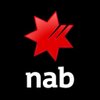Top 50 Terraform Interview Questions and Answers
Updated 2 Jul 2025

Asked in IBM

Q. How would you provide security to your credentials while using Terraform?
Use encrypted variables, limit access to credentials, and utilize secure storage solutions.
Encrypt sensitive variables using tools like Vault or AWS KMS
Limit access to credentials by using least privilege principles
Store credentials securely in a pas...read more

Asked in EPAM Systems

Q. Write Terraform code to create a resource.
Terraform code for creating an AWS EC2 instance
Define provider and resource block in main.tf file
Specify the AMI, instance type, key pair, and security group in the resource block
Run 'terraform init', 'terraform plan', and 'terraform apply' commands ...read more

Asked in Virtusa Consulting Services

To deploy multiple environment scripts using Terraform, you can use Terraform workspaces and variables.
Use Terraform workspaces to manage multiple environments such as dev, staging, and production.
Create separate Terraform configuration files for eac...read more

Asked in Accenture

Q. Explain Terraform modules and provide an example.
Terraform modules are reusable components that allow you to encapsulate and organize your infrastructure code.
Modules help in creating reusable infrastructure components
They allow for better organization and encapsulation of code
Modules can be shared...read more

Asked in UKG

Q. Write a Terraform and Ansible script.
Write Terraform and Ansible script
Use Terraform to provision infrastructure resources like virtual machines, networks, and storage
Use Ansible to configure and manage software on the provisioned infrastructure
Create a Terraform script to deploy a virt...read more

Asked in Logisch Technologies

Q. write code of provider.tf
provider.tf code for Softwaretest Engineer interview
Use Terraform to define the provider configuration in provider.tf
Specify the provider type and version in the code
Example: provider.tf - provider "aws" { region = "us-west-2" }


Asked in VMware Software

Q. Write a Terraform module for any AWS resource.
Terraform module for creating an AWS S3 bucket
Define variables for bucket name, region, and tags
Create S3 bucket resource with specified variables
Add bucket policy for access control
Output bucket ARN for reference

Asked in Zehntech Technologies

Q. What errors have you faced while applying Terraform code?
I have faced errors such as resource conflicts, syntax errors, and provider version mismatches while applying Terraform code.
Resource conflicts occur when multiple resources are trying to create the same resource at the same time.
Syntax errors can oc...read more

Asked in Ernst & Young

Q. How do you check resources using Terraform?
Terraform checks resources using the 'terraform plan' command to preview changes and 'terraform state' for current resource status.
Use 'terraform plan' to see what changes will be made before applying them.
Run 'terraform apply' to implement the chang...read more

Asked in Wipro

Q. Are you familiar with scripting and Terraform?
Yes, I am aware of both script and Terraform.
I have experience writing scripts in languages like Python, Bash, and PowerShell.
I have used Terraform to automate infrastructure provisioning and management.
I am familiar with creating and managing infras...read more
Terraform Jobs




Asked in Wind River

Q. How would you handle Terraform state in a file system?
Terraform state in file system can be managed using remote backends or local state files.
Use remote backends like S3, Azure Blob Storage, or Google Cloud Storage for better collaboration and security.
If using local state files, store them in a versio...read more

Asked in World Wide Technology

Q. What are namespaces in Terraform?
Namespaces in Terraform are used to group resources together and prevent naming conflicts.
Namespaces allow you to organize resources within a Terraform configuration
They help prevent naming conflicts by prefixing resource names with a specified names...read more

Asked in HCLTech

Q. How did you use Terraform to build the infrastructure?
I used Terraform to automate the provisioning and management of infrastructure resources.
I defined infrastructure as code using Terraform configuration files
I used Terraform commands to create, update, and destroy infrastructure resources
I leveraged ...read more

Asked in National Australia Bank

Q. What does the lookup function do in Terraform?
Lookup function in Terraform retrieves the value of a named attribute from a named data source.
Lookup function is used to retrieve the value of a named attribute from a named data source.
It is commonly used to retrieve values from remote systems or d...read more

Asked in Volkswagen

Q. What are Terraform state files?
Tf state files are files generated by Terraform to store the state of your infrastructure.
Tf state files store information about the resources managed by Terraform
They help Terraform track the current state of your infrastructure
Tf state files should...read more
Asked in National Career Service

Q. What is NullResource in Terraform?
NullResource in Terraform is a resource that performs no actions when applied, but can be used to trigger provisioners or other side effects.
NullResource is a resource type in Terraform that allows you to run provisioners without creating any infrast...read more

Asked in Wipro

Q. How do Terraform Meta-arguments work in multiple scenarios?
Terraform Metaarguments are used to modify the behavior of resources in different scenarios.
Metaarguments can be used to control how Terraform handles resources, such as count, depends_on, lifecycle, provider, etc.
They can be used to define dependenc...read more

Asked in Wipro

Q. How do you write a composite Terraform module and pass its values to other modules?
Creating composite Terraform modules and passing values to other modules.
Create a main module that calls other modules
Define input variables in the main module and pass them to the child modules
Use output variables in the child modules to return valu...read more

Asked in OpenText Technologies

Q. Deep dive in Terraform and Python
Terraform is an infrastructure as code tool, while Python is a versatile programming language often used for automation in DevOps.
Terraform is used for provisioning and managing infrastructure resources in a declarative way.
Python is commonly used fo...read more

Asked in CME Group

Q. Describe the DevOps implementation process for Terraform deployments.
DevOps implementation process for Terraform deployments involves version control, infrastructure as code, automation, and collaboration.
Utilize version control systems like Git to manage Terraform code
Implement infrastructure as code principles to de...read more
Asked in Tatras Data

Q. Terraform and its workspace
Terraform workspaces allow multiple environments to be managed with a single configuration.
Terraform workspaces are used to manage multiple environments such as development, staging, and production.
Each workspace has its own state file, allowing for ...read more

Asked in EPAM Systems

Q. What are Terraform state files and where are they stored?
Terraform state files store the current state of infrastructure managed by Terraform.
State files are JSON files that contain information about the resources being managed by Terraform.
They are stored locally by default, but can also be stored remotel...read more

Asked in LTIMindtree

Q. Terraform templates to create aks
Terraform templates can be used to create AKS clusters.
Use the azurerm_kubernetes_cluster resource in Terraform to create an AKS cluster.
Specify the required parameters such as resource group, location, node count, and node size.
Use the azurerm_kuber...read more

Asked in CitiusTech

Q. How do you create containers in Terraform?
Container creation in terraform involves defining a container resource in a terraform configuration file.
Define a container resource in the terraform configuration file using the 'docker_container' or 'container' provider.
Specify the image, name, por...read more

Asked in Zscaler Softech

Q. Describe your Terraform experience with EKS cluster creation.
Experience with Terraform for creating EKS clusters
Utilize Terraform modules to define EKS cluster resources
Leverage Terraform provider for AWS to interact with EKS API
Use Terraform state management for tracking cluster changes

Asked in LTIMindtree

Q. Deploying the resources through terraform
Terraform is a tool for building, changing, and versioning infrastructure safely and efficiently.
Terraform uses configuration files to define the infrastructure resources needed.
It allows for the creation, modification, and deletion of resources in a...read more

Asked in IBM

Q. What are modules in Terraform?
Modules in Terraform are reusable configurations that can be used to create multiple instances of resources.
Modules help in organizing and reusing Terraform configurations.
They allow for creating reusable components that can be shared across differen...read more

Asked in Perforce Software and 6 others

Q. Write a Terraform script.
Writing a terraform script for infrastructure provisioning
Define provider and required variables
Create resources like instances, networks, and storage
Use modules for reusable code
Implement variables and outputs for flexibility
Leverage terraform state...read more

Asked in Egen (Formerly SpringML)

Q. Explain the modules in Terraform
Terraform modules are reusable components that define a set of resources in a Terraform configuration.
Modules help organize and reuse Terraform code
They encapsulate a set of resources and can be shared across projects
Modules can have input variables ...read more

Asked in Rebel Foods

Q. What are the differences between Terraform and Ansible?
Terraform is used for infrastructure provisioning and management, while Ansible is used for configuration management and automation.
Terraform is used for defining and managing infrastructure as code, focusing on provisioning resources like virtual ma...read more

Top Interview Questions for Related Skills
Interview Experiences of Popular Companies










Interview Questions of Terraform Related Designations



Reviews
Interviews
Salaries
Users










